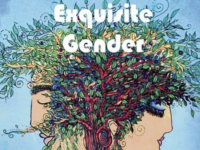Along with John Fahey, American composer Robbie Basho helped redefine the steel-stringed guitar as a concert instrument.
“From steel strings, you can get fire; you can ride and you can fly,” Basho reflected in a rare interview, and this fire illuminates every one of the 14 visionary albums he produced. As a guitarist, Basho utilized a vast array of tunings and picking techniques, sweeping the listener on a flight into his unique musical universe. Yet in 1986, when he suffered a fatal stroke during an experiment in “intentional whiplash” administered by a Berkeley chiropractor, the wider world barely noticed his passing.
His reputation has continued to grow, however: Basho’s classic album Venus in Cancer has been re-released by Tompkins Square records. Meanwhile, a recent tribute album curated by Buck Curran of Arborea, We Are All One, In the Sun, helped to spread his musical vision to a new audience. Next comes a re-mastered version of one of his most overlooked albums, Twilight Peaks. Previously only available on cassette, it’s also set to be released by Smeraldina-Rima records in February 2012 on CD and vinyl, complete with three bonus tracks.
Basho, whose real name was Daniel Robinson Jr., began playing the guitar at the University of Maryland in the late 1950s, a young bohemian immersed in the local folk and blues scene like fellow student John Fahey. Unlike Fahey, whose career would always overshadow Basho’s, he was to strike out in a musically radical direction. “I was just out on the road singing folk songs, just emoting these things,” Basho once remembered. “It dawned on me that music is supposed to say things, to do things. So I began musical Grail questing.”
In 1962, he discovered the records of Ravi Shankar, and would sit for hours, absorbing the raga form. According to Fahey, during a peyote trip, Basho became convinced he was the reincarnation of the Japanese haiku poet Matsuo Basho, later changing his name in his honor. Basho began work devising “The Esoteric Doctrine of Mood and Colour,” a system which endowed tunings and chords with atmospheric and spiritual attributes — and began a quest to create a Raga system for America. He took the drones and modal scales that characterized Indian music and translated them to the guitar, totally radical at the time. His approach was “soul first, technique later.”
Basho’s earliest recording, 1965’s Seal of the Blue Lotus was raw edged, soulful and quite unlike anything else occurring at the time in Western music. Basho’s liner notes for the album reveal a longing to re-imagine his home country as “a theatre of North American Taoism … a new continent, the rocks are raw, the winds are sharp, and the heart is rash and wild.” This aptly describes the spirit of the music — something startling and new, yet steeped in an ancient elemental quality. The title track is, according to Basho, “a raga invoking the Religious Springrasa Mood in Hindu Aesthetics.” It is slow building, from a sitar-like meditative opening to an ecstatic pulse he characterized as the Snowstorm technique, a glittering blur of finger picking, building a trance-like atmosphere, embarking on a musical inner flight. “My stuff isn’t far out,” considered Basho, “it’s far in. It’s a high feeling, a deeper level.”
The feel of travel and space, a pilgrimage to create a global hybrid music, was always present on his albums. “America, culturally, has its head in the garbage can instead of the honey pot,” Basho once said. “By God, it could do with some of the dignity of other cultures.” He picked elements from Japanese, Middle Eastern, European, and Indian culture to inform his musical vision, as well as blues, Cajun and American folk and country. He also turned to the landscapes and native legends of North America for the inspiration for several albums, seeking to give the vistas of his native country voice through music. Later albums saw Robbie developing his songwriting and singing — a high, stentorian otherworldly vibrato, often reminiscent of Peruvian singer Yma Sumac.
Sadly, Robbie’s music never crossed over to a wide audience, perhaps because of the attention it demands from the listener. By the time Twilight Peaks was released in 1984, just two years before his passing, Basho was finding record labels unwilling to take a chance on putting out his music on vinyl, and it only ever appeared on cassette tape. The playing is more focused than some of his early efforts, with shorter, simpler tracks compared to his earlier rough-hewn epics.
The album contains some of his most beautiful playing. The opening title track swoops and glides, light as rarefied mountain air, whilst “Afternoon and Evening” flits effortlessly between styles, one minute sounding like a mini-Vaughn Williams piece of English pastoral translated to guitar, before sweeping into a particularly breathtaking example of his “snowstorm technique.” The highlight is “Camelot ii,” a moody, dancing piece that conjures memories of his classic “The Grail and the Lotus.” It is, in fact, one of his best-ever pieces, and shows his playing was still more than equal to any of his earlier musical high points such as “Eagle Sails the Blue Diamond Waters.” The re-mastered release from Smeraldina-Rima records sees a cleanup of the muddy sound featured on bootlegs of the original cassette album, breathing new life into Basho’s overlooked classic, and making Twilight Peaks essential for fans and new converts alike.
Buck Curran of Arborea went in-depth with us about the evolution of the 2010 Robbie Basho tribute project, ‘We Are All One, In the Sun’:
Ever since discovering Robbie Basho’s music, I felt an instant connection to his musical vision and his love for the guitar. Arborea’s music is heavily inspired and connected to the dramatic landscapes of Maine and its connection with the ocean. Shanti (Curran, Buck’s wife) and I also have deep connections with Spain, Ireland, and the British Isles, so those lands also inspire our music, lyric, poetry, and photography. Discovering Basho’s music and his aesthetic, and his ability to give voice to the American landscapes that inspired him … I realized Shanti and I had chosen similar paths and drew from the same musical well that he did — as well as his love for music from Persia, India, and the Orient. The more of Robbie’s music I became exposed to, the more I felt compelled to create this compilation to honor his contribution to the world of music. I was also surprised in all this time no one else had initiated a tribute, especially when it seemed like a new John Fahey tribute was coming out every other week.
The next challenge was finding other artists who also felt that deep connection with his music. It’s something that took quite a long time, and though there were obvious choices when I first started contacting other musicians, it took a while to coordinate because of everybody’s busy schedules. I started organizing the project in early 2007 and Jack Rose was one of the first artists I contacted, but he was already committed to other projects and didn’t have any new music to submit. Jack was definitely looking forward to hearing the record and it’s too sad that he’s no longer with us. Steffen Basho was one of the main artists I thought of when organizing this, because of his life dedication and development to the art of playing guitar in the style of Basho. It seems quite natural to start and finish the album with his recordings, and quite special to have pieces that were never before released and directly influenced by Basho pieces.
Glenn Jones was another obvious choice and someone who Shanti and I both respect and love. Glenn also personally knew Robbie and helped him out during an East Coast U.S. tour in the early 1980s. Glenn’s piece is named after the address of Basho’s home in Berkeley, California. The young Irish guitarist Cian Nugent did a wonderful job at capturing a Basho-esque atmosphere with his piece “Odour of Plums.” Robbie Basho had a great passion for Persian music and when I first heard Iraqi born oud player Rahim Alhaj I immediately thought about Basho. Rahim’s playing is so alive, poetic and visceral, and his piece “Baghdad Athania” is a perfect example of a recording that contains the same elements that I hear when listening to Basho’s recordings. Listen to the 1974 album Zarthus and you will hear those elements. I think Basho would have really loved Rahim’s playing.
I chose to use Helena Espvall’s previously unreleased improvisational recording “Travessa Do Cabral,” because I think Helena represents a natural connection to exploratory side of Basho — and for me, that recording conjures up shades of Persian landscapes. The important thing about the album is that I didn’t want it to just be a guitar album, because Basho’s vision was music first and the guitar was the primary instrument that he used to convey that vision — but of equal importance was his approach to singing and composition. Basho sang with such passion and energy, and it’s so amazing to hear the emotion and atmosphere that is conveyed on every one of his recordings. It was very important to represent some of those vocal songs with this tribute.
The first time I heard Blue Crystal Fire I could immediately hear Shanti’s voice and the words felt akin to something I might write for Shanti. “Moving Up A Ways” is a song I suggested to Meg and she connected with it, and fortunately was able to get in to the studio and have Greg Weeks record it. “Song for the Queen” is another gorgeous song that just seemed perfectly suited for Fern Knight, and one that they connected with and had time to record.
The artwork for the cover was a photo that Shanti had taken while on a walk with our daughter in the woods here in Maine — an image that I absolutely love and one that felt almost like the visual representation of a Japanese Haiku poem. The two significant things about that cover is the leaf suspended on the single thread of a spider web…it looks like it’s floating in the air, which made me think of the Basho recording “Leaf in the Wind” from Visions of the Country. The other thing is the sun coming through the trees, which made me think of Basho’s line “We Are All One, In The Sun” from the song “Moving Up A Ways.” That lyric seemed to represent all the amazing artists that collaborated on this tribute. I think that photo is the perfect combination of elements to represent the cover and pay tribute to Robbie Basho.
[amazon_enhanced asin=”B0039A9MHK” container=”” container_class=”” price=”All” background_color=”FFFFFF” link_color=”000000″ text_color=”0000FF” /] [amazon_enhanced asin=”B000GIWH02″ container=”” container_class=”” price=”All” background_color=”FFFFFF” link_color=”000000″ text_color=”0000FF” /] [amazon_enhanced asin=”B001FA1O0O” container=”” container_class=”” price=”All” background_color=”FFFFFF” link_color=”000000″ text_color=”0000FF” /] [amazon_enhanced asin=”B001IP2AHW” container=”” container_class=”” price=”All” background_color=”FFFFFF” link_color=”000000″ text_color=”0000FF” /] [amazon_enhanced asin=”B000024UJN” container=”” container_class=”” price=”All” background_color=”FFFFFF” link_color=”000000″ text_color=”0000FF” /]
- Various artists – We Are All One, In the Sun: A Tribute to Robbie Basho (2010) - December 21, 2011
- Forgotten series: Nico – The Marble Index (1969) - April 20, 2011




